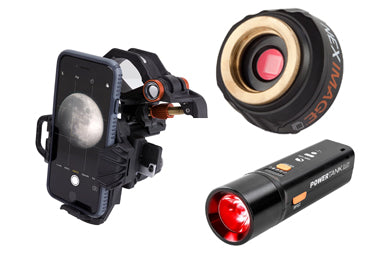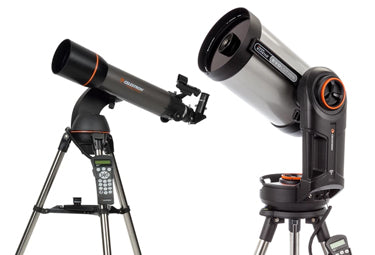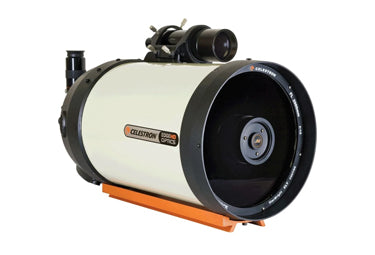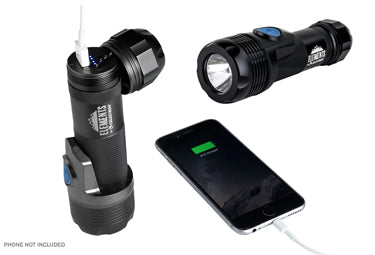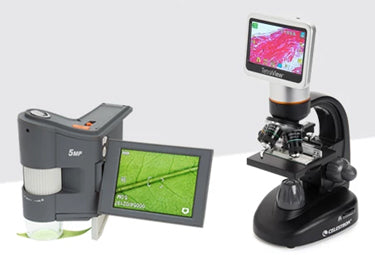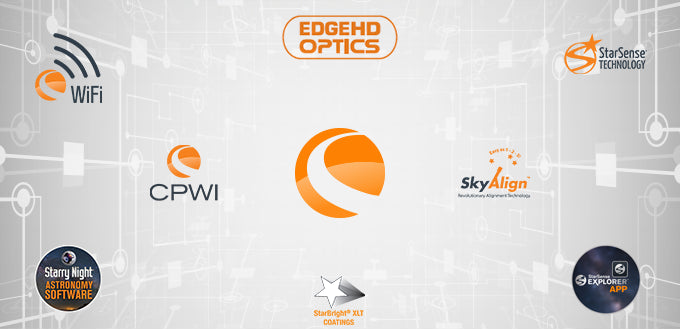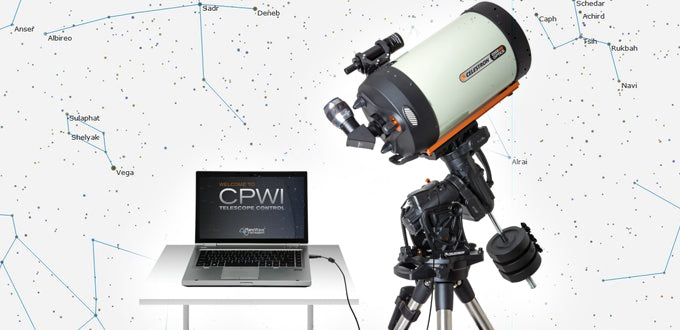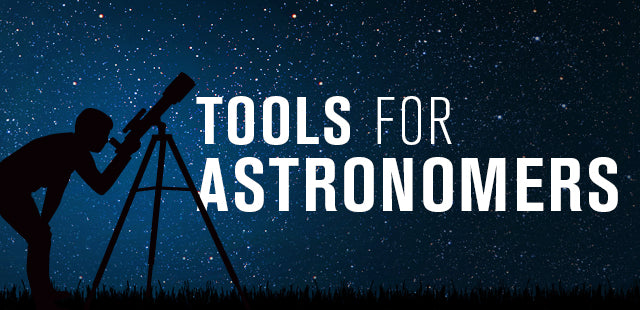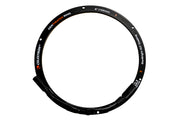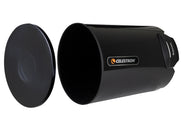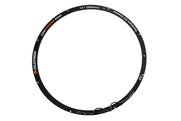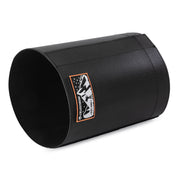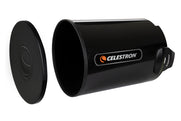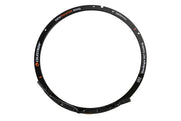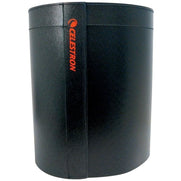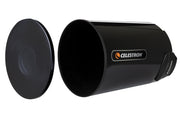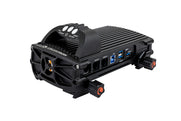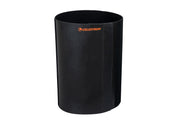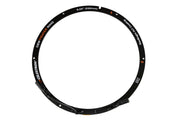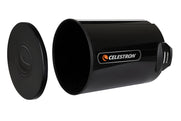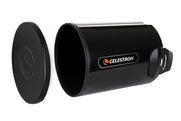The Ultimate Guide to Observing the Fall Sky (Northern Hemisphere)
September 8, 2021

Summer, it's always bittersweet to see you go. You arrived like a blazing meteor, bringing immense joy with your long, warm, sunny days and starry nights filled with the Milky Way and shooting stars. But now, autumn is here, ushering in longer, cooler nights. The crisp air fills the countryside with the scent of hot apple cider and freshly harvested crops, likely gathered by farmers under the light of the Harvest Moon, which occurs five days before the autumnal equinox in 2024. Tree leaves transform into a vibrant red, gold, yellow, orange, and brown display as if dressed for a grand cotillion. It's time to welcome an exciting new season of change as neighborhoods are awash with the sights of Halloween and Thanksgiving-themed decorations.
Stargazers may have noticed summer constellations drifting west while new constellations rise in the east during the evening hours. If you missed the summer Milky Way and some of its celestial wonders, there's still time to catch them from home or, even better, from a dark sky site before they vanish until next season. While autumn stars may not shine as brightly as those in winter, spring, or summer, their constellations are easily recognizable.
If you're new to astronomy and just starting with a telescope or binoculars, this guide is for you. It will help you get acquainted with the autumn constellations and popular celestial targets within them. So, please put on your jacket, grab a warm beverage and a red flashlight, and let's head outside to explore the top sights of autumn!
Popular Autumn Constellations and Asterisms
In ancient times, our ancestors looked to the heavens and noticed that with each season, new star groupings appeared in the sky. This predictable cycle of visible constellations repeated each year as Earth continued its orbit around the Sun. Using their vivid imaginations, stargazers saw these groupings as patterns resembling mythological creatures, animals, and other objects they named. You can't miss Cassiopeia's famous "M" or "W," depending on its orientation, and the Great Square of Pegasus. These are easy for beginners to find if you know where to look.
The most popular fall constellations are best seen from mid-September until the end of the year. These include zodiac constellations like Aquarius, Aries, and Pisces, and those in the Perseus family: Andromeda, Cassiopeia, Cepheus, Cetus, Pegasus, Perseus, and Triangulum.
 |
Aquarius Aquarius, the water bearer, is a large constellation covering 980 square degrees. It is bordered by Pegasus, Pisces, Cetus, Sculptor, and Piscis Austrinus. Aquarius is one of the 13 zodiac constellations and hosts the Delta Aquarids meteor shower in late July. |
 |
Andromeda In Greek mythology, Andromeda was the princess daughter of Queen Cassiopeia and King Cepheus, chained to a rock as a sacrifice to the sea monster Cetus. Andromeda is a prominent fall constellation covering 722 square degrees. It appears as two long lines of stars, with the bright star Alpheratz seeming to share one of Pegasus's square stars. Andromeda is also home to the Andromeda Galaxy, the brightest spiral galaxy visible to the naked eye. Find it near Cassiopeia, Perseus, Triangulum, Pisces, and Pegasus. |
|
|
Aries Known as "The Ram," Aries is usually listed as the first zodiac constellation due to the Sun's position in it around the beginning of spring in 1800 BC. Its symbol represents a ram's horns and is marked by Hamal, a second-magnitude yellow giant star. Aries is near Pisces to the west and Triangulum to the north. |
 |
Cassiopeia, the wife of King Cepheus of Ethiopia, is a circumpolar constellation most prominent in the fall. It can be found between the north celestial pole and Andromeda. The brightest stars form an easy-to-recognize "M" or "W." Cassiopeia is situated in the Milky Way and contains several deep-sky objects, including open star clusters visible in small telescopes. |

|
Cepheus Cepheus, named after King Cepheus of Ethiopia, is a circumpolar constellation visible all year in the Northern Hemisphere. It is near the North Pole and has a five-sided figure resembling a house. Cepheus contains some of the largest known stars in the Milky Way. |
 |
Cetus In Greek mythology, Cetus was the sea monster sent to feast on Andromeda. Cetus is located below Pisces and is visible in late fall and winter. It is the 4th largest constellation, covering 1,231 square degrees. |
 |
Perseus Named after the Greek hero Perseus, who used Medusa's head to turn Cetus to stone, Perseus is located along the Milky Way, southwest of Cassiopeia's "W." The Perseids meteor shower, visible in mid-August, appears to "rain" from Perseus. Perseus is home to several deep-sky objects and the famous eclipsing binary star Algol. |
 |
Pegasus Cygnus, Pisces, and Andromeda border the winged horse Pegasus. It is easily identified by its giant "square," a centerpiece in the mid-fall sky. One of its stars, Alpheratz, is shared with Andromeda. Pegasus has many deep-sky objects, but most are too faint for small telescopes. |
 |
Pisces Pisces, also known as The Fishes, is a large fall constellation of faint stars located in an area of the sky called the Sea. It can be found next to Aries and below the Great Square of Pegasus. |
 |
Triangulum Triangulum is one of the minor constellations in the night sky. It is located just above Aries and below Andromeda. Its name means "triangle" in Latin, and its three brightest stars resemble an arrow. Although there are no major star clusters or nebulae, Triangulum is home to the Pinwheel galaxy, a face-on irregular spiral galaxy belonging to the Local Group of galaxies. |

Top Autumn Celestial Objects
Cooler fall evenings are perfect for spotting new constellations and celestial objects in the Northern Hemisphere after dusk. These objects can be seen with small to mid-sized telescopes, ranging from 60 mm to 8" in aperture. Binoculars are also useful! Try to avoid city lights and find darker skies for the best views. Autumn skies are rich with star clusters, the brightest and nearest galaxy, binary stars, double stars, and red supergiant stars. While we can't cover them all here, this guide will help you start exploring the most popular ones.

|
Algol Algol, also known as the Demon Star, is in the Perseus constellation. Its brightness varies between magnitudes 2.1 and 3.4. Algol is a famous eclipsing binary system where two stars orbit and pass in front of each other, causing the star to dim and brighten. This phenomenon happens because the stars' orbital plane is almost edge-on from Earth's perspective. Algol was first recorded in 1667. The name Algol comes from Arabic, meaning "head of the ghoul," referring to Medusa's head covered in snakes. Spooky! |
 |
Almach Almach is a well-known double star located at one of Andromeda's feet. The larger star appears golden through a telescope, while the smaller star looks indigo blue. However, Almach is a quadruple star system, with the blue star part of a triple star system. |
 |
Andromeda Galaxy A favorite autumn target, the Great Andromeda Galaxy, is the brightest (magnitude 3.4) and nearest spiral galaxy to our Milky Way. Located in the constellation Andromeda, it is 2.5 million light-years away and is the most distant object visible to the naked eye. It appears as a fuzzy patch of light from a dark sky site. A rich field telescope or binoculars are ideal for observing the entire galaxy. The galaxy's core and two satellite galaxies, Messier 32 and Messier 110, are visible through a telescope. The Andromeda Galaxy is on a collision course with the Milky Way, but this won't happen for at least four billion years! |
 |
Double Cluster The Double Cluster, also known as H and Chi Persei (NGC 869 and NGC 884), is a favorite autumn target. It consists of two-star clusters located 7,600 light-years away in the constellation Perseus. With binoculars, look halfway between Cassiopeia and Perseus to find it. From a dark sky, it appears as a visible smudge. A telescope reveals two sparkling clusters filled with stars, including several supergiants. |
 |
E.T. or Owl Cluster NGC 457, also known as the Owl Cluster or the E.T. Cluster, is a small open star cluster in Cassiopeia. Its two brightest stars resemble an owl's eyes or the eyes of the extraterrestrial creature from the movie "E.T." With a magnitude of 6.4, the cluster is just beyond naked-eye visibility but can be seen with binoculars or a telescope. The cluster's stars resemble an owl with wings spread out, ready to take flight. It's a favorite object to show kids at star parties. |
 |
Fomalhaut At magnitude 1.1, Fomalhaut is the brightest star in the Piscis Austrinus constellation, also known as "the southern fish." It stands out as a solitary star in an area of the sky without other bright stars. In 1983, the IRAS satellite discovered a dusty debris ring around Fomalhaut. In 2008, astronomers found an exoplanet named Fomalhaut b, or Dagon. While you won't see the debris ring or exoplanet, you will see a brilliant star in your telescope when you visit the "loneliest" star in the sky. |
 |
Messier 15 Also known as NGC 7078, Messier 15 is a stunning globular cluster in the Pegasus constellation. Discovered by Jean-Dominique Maraldi in 1746, it was later cataloged by Charles Messier as his 15th object. M15 is one of the oldest globular clusters, with an apparent magnitude of 6.2. It appears as a fuzzy star in binoculars, but telescopes with at least a 6-inch aperture reveal its bright core of densely packed stars. Located about 33,600 light-years from Earth, it spans roughly 210 light-years across. M15 is the first globular cluster identified to contain a planetary nebula, Pease 1. |
 |
Messier 33 The Triangulum Galaxy, or NGC 598, is a nearby face-on spiral galaxy and the third-largest in the Local Group. Situated three million light-years away in the small constellation Triangulum, it has an apparent magnitude of 5.7 and is barely visible to the naked eye under exceptionally dark skies. Due to its low surface brightness, binoculars or low-powered telescopes are recommended for viewing it. The galaxy's light is spread over an area nearly the size of four full Moons, making it a fun challenge to spot! |

|
Messier 34 M34, also known as NGC 1039, is an open cluster of about 400 stars in the Perseus constellation, roughly 5 degrees from the Demon Star, Algol. It is approximately 1,500 light-years from Earth and has an apparent magnitude of 5.5. M34 is visible in dark skies, and binoculars or a low-powered telescope are recommended for the best view. |
 |
Mu Cephei Mu Cephei, famously known as Herschel's Garnet Star, is a red supergiant and one of the most luminous stars in the night sky. Located in the constellation Cepheus, "the King," it is one of the largest stars visible to the naked eye, with an apparent magnitude of 4.08. Its reddish color makes it stand out in dark skies. With an absolute magnitude of -7.0, Mu Cephei's luminosity is about 350,000 times that of the Sun. It will eventually go supernova in its twilight years, but this process may take millions of years, giving you plenty of time to admire this beautiful carbon star. |
 |
VV Cephei VV Cephei is a 5th magnitude red supergiant and variable binary star system located about 4,900 light-years from Earth in the constellation Cepheus, "the King." With an apparent magnitude ranging from 4.9 to 5.4, it is one of the largest known stars in the Milky Way, with about 19 solar masses. VV Cephei has two stars: a cooler red supergiant and a hotter blue-white sequence star. You can spot it just inside Cepheus' "square house" using binoculars or a telescope. |
Other Notable Celestial Events this Autumn
 |
Late September/October - Comet C/2023 A3 (Tsuchinshan-ATLAS) |
 |
October 2 - Annular Solar An annular solar eclipse occurs when the Moon is too far from Earth to cover the Sun completely. This result is a ring of light around the darkened Moon. The Sun's corona is not visible during an annular eclipse. On October 2, the eclipse path will begin in the Pacific Ocean off the coast of South America and move across parts of southern Chile and Argentina. A partial eclipse will be visible throughout most of southern South America. |
 |
October 17 - Full Moon, Supermoon On October 17, the Moon will be on the opposite side of the Earth from the Sun, and its face will be fully illuminated. This phase occurs at 11:28 UTC. Native American tribes called October's full Moon the Hunter's Moon because it was the time when leaves fell, and the quarry was plump and ready for the hunt. October's full Moon is the third and closest supermoon in 2024: 222,055 miles (357,363 kilometers) from Earth and will appear slightly larger and brighter than normal. |
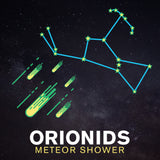 |
October 21-22 - Orionids Meteor Shower The Orionids Meteor Shower runs annually from about October 2 to November 7. In 2024, it peaks on the night of October 21 and the morning of October 22. At its climax, it can produce up to 20 meteors per hour. The Orionids are caused by dust left behind by Halley's Comet. The shower This year, the waning gibbous Moon will wash out most of the fainter meteors, but some of the brighter ones should still be visible. Plan on viewing the meteor shower away from city lights at a dark sky location, preferably after midnight. Meteors will radiate from the constellation Orion but can appear anywhere in the sky. |
 |
November 15 - Full Moon, Supermoon On November 15, the Moon will be on the opposite side of the Earth from the Sun, and its face will be fully illuminated. This phase occurs at 21:30 UTC. Native American tribes called November's full Moon the Beaver Moon because it was the time of year for trappers to hunt beavers before the start of winter. This full Moon is the last of the four consecutive Supermoons of 2024 and will appear slightly larger and brighter than normal. |
 |
November 17 - Uranus at Opposition On November 17, Uranus will be at its closest approach to Earth, with the Sun fully illuminated its face. Uranus will be at its brightest for the year and visible all night, making it the best time to observe this outer planet. Because Uranus is so far away, it will appear as a tiny turquoise-like colored dot in the blackness of space. |
 |
November 17, 18 – Leonids Meteor Shower. The Leonids produce an average of 10 to 15 meteors per hour at their peak. About once every 33 years, the Leonids bring a great meteor storm that can occur with hundreds and hundreds of meteors per hour. This peak last occurred in 2001. Dust left behind by comet Tempel-Tuttle produces the Leonids. The Leonids shower runs annually from November 6-30 and will peak on the night of the 17th and the morning of the 18th. This year, light from a waning gibbous Moon will wash out all but the brighter meteors, but the Leonids can be unpredictable, so there's always a good chance for a good show. Meteors will radiate from the constellation Leo but can appear anywhere in the sky.
|
 |
December 7 Jupiter at Opposition |
 |
December 13, 14 – Geminids Meteor Shower The Geminids Meteor Shower is often regarded as the year's best meteor shower, producing up to 120 multicolored meteors per hour at its peak. This shower is caused by debris from the asteroid 3200 Phaethon, discovered in 1982. The Geminids occur annually from December 7 to 17, with the peak occurring this year on the night of December 13 and the morning of December 14. The nearly full Moon will obscure all but the brightest meteors this year. However, with patience, you may still catch some spectacular meteors. The best viewing time is after midnight. The meteors will appear to radiate from the constellation Gemini but can be seen anywhere in the sky.
|
Helpful Observing Hints
|
Tip #1: Use an Astronomy App or Star Chart  |
Using a detailed star map is an excellent way to learn the positions of celestial objects throughout the year. While it may seem old-fashioned, it remains highly effective. For a more modern approach, astronomy apps like Celestron's SkyPortal offer comprehensive and informative tools. This full-featured planetarium app, included with any Celestron telescope purchase, is available on the Apple App Store and Google Play. SkyPortal provides new telescope owners with a wealth of information, including audio and written descriptions of various celestial objects, celestial coordinates, a real-time sky map, rise and set times, and physical and orbital parameters. |
|
Tip #2: Seeing Conditions |
Steady seeing conditions are crucial for observing objects like planets, the Moon, or double stars. However, poor seeing conditions impact deep sky objects such as nebulae and galaxies less. Avoid nights with turbulent atmospheres, as your targets will appear as shimmering blobs in your telescope's eyepiece. Begin with low magnification and gradually increase it if the views remain steady. You'll be amazed at how sharp and detailed objects can appear on a night of good seeing. |
|
Tip #3: Telescope Cooldown
|
Cool your telescope down! Bring your telescope outside about an hour before you plan to observe to allow it to reach ambient temperature. Achieving thermal equilibrium with the outside air is essential to avoid distorted views. Telescopes with larger mirrors and lenses may take longer to cool down, so plan accordingly for the best viewing experience. |
|
Tip #4: Collimation
|
Collimate, collimate, collimate! If you own a Newtonian or Schmidt-Cassegrain telescope, ensure your telescope's optics are collimated. Proper collimation can significantly enhance your ability to discern fine details. Misaligned optics may prevent you from seeing the clearest and sharpest details. Make it a habit to check and adjust collimation as needed once your telescope has cooled down. Most refractor telescopes generally do not require collimation. |
|
Tip #5: Dress in layers
|
Warm, balmy nights might feel like shorts and t-shirt weather, but it's wise to keep a light jacket handy in case the temperature drops. Early fall evenings can bring out mosquitoes and other creepy crawlers, so it's good to cover up and apply bug spray to ensure your stargazing session remains pleasant. |
If you own a Schmidt-Cassegrain or EdgeHD telescope, use a dew shield to protect your front corrector plate from dew. You can explore our Dew Prevention products for more options.
Discover the night skies of the Northern Hemisphere with Celestron Sky Maps! This classic collection of seasonal star charts, complete with a glow-in-the-dark luminous star finder, has been a favorite among both beginner stargazers and seasoned amateur astronomers for years. It provides everything you need to find constellations quickly.
Final Thoughts
Autumn is a transitional season and a perfect opportunity to stargaze with family and friends before the weather turns chilly. With many of us eager to socialize and spend time outdoors, stargazing has become a popular hobby and a wonderful way to explore our amazing Universe.
Head outside with a Sky Map or your Celestron telescope and SkyPortal app to learn and identify the autumn constellations and their fascinating backgrounds. You'll be amazed when you catch your first glimpse of the Andromeda Galaxy, the Double Cluster, and the E.T. or Owl Cluster from a dark sky site. As a bonus, Comet C/2023 A3 (Tsuchinshan-ATLAS) is on its way. It could become bright enough to see with the naked eye or make for an excellent binocular or telescope object. We’ll find out soon enough!
Clear skies and happy observing!
Other articles you might be interested in: Ultimate Guide to Observing the Universe

